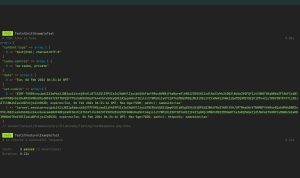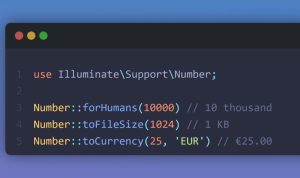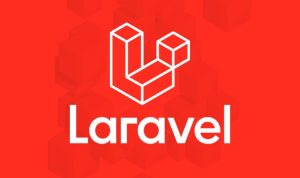Rengga Dev – This article focuses adding WebGL effects to <image> and <video> elements of an already “completed” web page. While there are a few helpful resources out there on this subject (like these two), I hope to help simplify this subject by distilling the process into a few steps:
- Create a web page as you normally would.
- Render pieces that you want to add WebGL effects to with WebGL.
- Create (or find) the WebGL effects to use.
- Add event listeners to connect your page with the WebGL effects.
Specifically, we’ll focus on the connection between regular web pages and WebGL. What are we going to make? How about a draggle image slider with an interactive mouse hover!
You take it from here!
This is, of course, just the tip of the iceberg when it comes to what we can do with the slider now that it is in WebGL. For example, common effects like turbulence and displacement can be added to the images in WebGL. The core concept of a displacement effect is to move pixels around based on a gradient lightmap that we use as an input source. We can use this texture (that I pulled from this displacement demo by Jesper Landberg — you should give him a follow) as our source and then plug it into our shader.
CSS
* {
box-sizing: border-box;
}
html {
font-size: 25px;
}
body {
background: #1d1d1d;
font-family: Asap, sans-serif;
}
#canvas {
position: fixed;
top: 0;
right: 0;
left: 0;
height: 100vh;
}
#content {
position: relative;
z-index: 1;
}
.wrapper {
position: relative;
overflow: hidden;
}
.slide-container {
position: relative;
}
.slide-container::before {
display: block;
content: "";
width: 100%;
padding-top: 42.857%; /* 9 / 21 */
}
.slide {
position: absolute;
width: 100%;
height: 100%;
top: 0;
left: 0;
}
.slide img {
width: 100%;
}
.webGLSlider img {
position: absolute;
top: 0;
right: 0;
bottom: 0;
left: 0;
}
.webGLSlider {
color: white;
}
.slider-heading {
text-transform: uppercase;
margin: 0;
}
.webGLSlider a {
color: inherit;
text-decoration: none;
}
.text-right {
text-align: right;
}
.text-right .text {
display: inline-block;
vertical-align: middle;
margin-right: 2rem;
}
.hover-arrow {
vertical-align: middle;
}
.split-child {
display: inline-block;
}
.split-parent {
overflow: hidden;
}
.webGLSlider img {
display: none;
}
.no-curtains img:not(.texture) {
display: block;
}
JS
// Save references to elements that we will use
const wrapper = document.querySelector(".webGLSlider .wrapper");
const slideContainer = document.querySelector(".webGLSlider .slide-container");
const slides = gsap.utils.toArray(".webGLSlider .slide");
const proxy = document.createElement("div");
const webGLSlider = document.querySelector('.webGLSlider');
let sliderTitle = document.querySelector('#slider-title');
const sliderLink = document.querySelector('#slider-link');
const numSlides = slides.length;
const wrapIndex = gsap.utils.wrap(0, numSlides);
const gap = 0;
let lastIndex = 0; // Used in resize and to change out headings
let firstRun = true;
// These are set in the resize function
let slideHeight;
let slideWidth;
let wrapWidth;
let wrapVal;
let animation;
let draggable;
// Variables related to the WebGL functionality
const planes = [];
const maxVelocity = 10000;
const halfMaxVelocity = maxVelocity / 2;
// Our shaders
const v300Shader = `#version 300 es
// Determines how much precision for the GPU to use
#ifdef GL_ES
precision mediump float;
#endif
// in = passed in from a data buffer
// uniforms = passed in from CPU (our program)
// out = passed from our vertex shader to our fragment shader
// Default mandatory attributes
in vec3 aVertexPosition;
in vec2 aTextureCoord;
// Mandatory projection and model view matrices are generated by curtains
// It will position and size our plane based on its HTML element CSS values
uniform mat4 uMVMatrix;
uniform mat4 uPMatrix;
// This is generated by curtains based on the sampler name we provided
// It will be used to map adjust our texture coords so the texture will fit the plane
uniform mat4 planeTextureMatrix;
// The un-transformed mouse position
uniform vec2 uMouse;
// Texture coord varying that will be passed to our fragment shader
out vec2 vTextureCoord;
// Our transformed mouse position that will be passed to our fragment shader
out vec2 vMouse;
void main() {
// Use texture matrix and original texture coords to generate accurate texture coords
vTextureCoord = (planeTextureMatrix * vec4(aTextureCoord, 0.0, 1.0)).xy;
// Convert from vertex pos to texture pos and apply texture matrix to the mouse position as well
vMouse = (planeTextureMatrix * vec4((uMouse + 1.0) * 0.5, 0.0, 1.0)).xy - 0.5;
// Apply our vertex position based on the projection and model view matrices
gl_Position = uPMatrix * uMVMatrix * vec4(aVertexPosition, 1.0);
}`;
const f300Shader = `#version 300 es
#ifdef GL_ES
precision mediump float;
#endif
// Our texture samplers - Their names match the data-sampler attributes on our image tags
uniform sampler2D planeTexture; // The image texture
uniform sampler2D displacementTexture; // The displacement texture
// Our texture coords (on a pixel-by-pixel basis)
in vec2 vTextureCoord;
in vec2 vMouse; // The mouse position in texture coordinates
out vec4 outputColor; // The output color of each pixel (what was gl_FragColor in WebGL1)
// FOR MOUSE EFFECTS
uniform float uRadius; // Radius of pixels to warp/invert
const float transAmnt = 0.05; // Amount to translate the texture by
const float PI = 3.1415926535;
// FOR DISPLACEMENT
// The power and intensity of our displacement - passed in
uniform float uPower;
uniform float uIntensity;
const float aspect = 2.33333333; // 21 / 9
// FOR ANTIALIAS
uniform vec2 uResolution;
#define R uResolution
// This basically gives you antialias for free without the need of a second pass
// If you don't need antialias in another place, local antiliasing is probably best
// From here: https://www.shadertoy.com/view/3sjGDh
// Which is explained here: https://shadertoyunofficial.wordpress.com/
// (Look for antialias in the search box)
#define S(v) smoothstep(2.0/R.y, 0.0, v)
void main() {
vec2 myUV = vTextureCoord;
outputColor.a = 1.0;
// Check if pixel is within the given radius of the mouse
vec2 diff = myUV - vMouse - 0.5;
diff.x *= aspect;
float distance = length(diff);
// Create the fish-eye effect
if (distance <= uRadius) {
float scale = (1.0 - cos(distance/uRadius * PI * 0.5));
myUV = vMouse + normalize(diff) * uRadius * scale + 0.5;
}
// Translate the texture
myUV += -vMouse * transAmnt;
// Displacement
// Based on https://codepen.io/ReGGae/pen/bmyYEj
vec4 disp = texture(displacementTexture, myUV);
vec2 dispVec = vec2(disp.x, disp.y);
vec2 distPos = myUV + (dispVec * uIntensity * uPower);
vec3 tex = texture(planeTexture, distPos).rgb;
// Antialiasing
vec3 inverted = vec3(1.0 - tex.r, 1.0 - tex.g, 1.0 - tex.b);
if(uRadius > 0.0) {
outputColor.rgb = mix( inverted, tex, S(distance - uRadius));
} else {
outputColor.rgb = inverted.rgb;
}
// Not antialiased
// if(distance <= uRadius) {
// outputColor.rgb = tex;
// } else { // invert
// outputColor.rgb = vec3(1.0 - tex.r, 1.0 - tex.g, 1.0 - tex.b);
// }
}`;
const v100Shader = `
// Determines how much precision for the GPU to use
#ifdef GL_ES
precision mediump float;
#endif
// Default mandatory attributes
attribute vec3 aVertexPosition;
attribute vec2 aTextureCoord;
// Mandatory projection and model view matrices are generated by curtains
// It will position and size our plane based on its HTML element CSS values
uniform mat4 uMVMatrix;
uniform mat4 uPMatrix;
// This is generated by curtains based on the sampler name we provided
// It will be used to map adjust our texture coords so the texture will fit the plane
uniform mat4 planeTextureMatrix;
// The un-transformed mouse position
uniform vec2 uMouse;
// Texture coord varying that will be passed to our fragment shader
varying vec2 vTextureCoord;
// Our transformed mouse position that will be passed to our fragment shader
varying vec2 vMouse;
void main() {
// Use texture matrix and original texture coords to generate accurate texture coords
vTextureCoord = (planeTextureMatrix * vec4(aTextureCoord, 0.0, 1.0)).xy;
// Convert from vertex pos to texture pos and apply texture matrix to the mouse position as well
vMouse = (planeTextureMatrix * vec4((uMouse + 1.0) * 0.5, 0.0, 1.0)).xy - 0.5;
// Apply our vertex position based on the projection and model view matrices
gl_Position = uPMatrix * uMVMatrix * vec4(aVertexPosition, 1.0);
}`;
const f100Shader = `
#ifdef GL_ES
precision mediump float;
#endif
// Our texture samplers - Their names match the data-sampler attributes on our image tags
uniform sampler2D planeTexture; // The image texture
uniform sampler2D displacementTexture; // The displacement texture
// Our texture coords (on a pixel-by-pixel basis)
varying vec2 vTextureCoord;
varying vec2 vMouse; // The mouse position in texture coordinates
// FOR MOUSE EFFECTS
uniform float uRadius; // Radius of pixels to warp/invert
const float transAmnt = 0.05; // Amount to translate the texture by
const float PI = 3.1415926535;
// FOR DISPLACEMENT
// The power and intensity of our displacement - passed in
uniform float uPower;
uniform float uIntensity;
const float aspect = 2.33333333; // 21 / 9
// FOR ANTIALIAS
uniform vec2 uResolution;
#define R uResolution
// This basically gives you antialias for free without the need of a second pass
// If you don't need antialias in another place, local antiliasing is probably best
// From here: https://www.shadertoy.com/view/3sjGDh
// Which is explained here: https://shadertoyunofficial.wordpress.com/
// (Look for antialias in the search box)
#define S(v) smoothstep(2.0/R.y, 0.0, v)
void main() {
vec2 myUV = vTextureCoord;
gl_FragColor.a = 1.0;
// Check if pixel is within the given radius of the mouse
vec2 diff = myUV - vMouse - 0.5;
diff.x *= aspect;
float distance = length(diff);
// Create the fish-eye effect
if (distance <= uRadius) {
float scale = (1.0 - cos(distance/uRadius * PI * 0.5));
myUV = vMouse + normalize(diff) * uRadius * scale + 0.5;
}
// Translate the texture
myUV += -vMouse * transAmnt;
// Displacement
// Based on https://codepen.io/ReGGae/pen/bmyYEj
vec4 disp = texture2D(displacementTexture, myUV);
vec2 dispVec = vec2(disp.x, disp.y);
vec2 distPos = myUV + (dispVec * uIntensity * uPower);
vec3 tex = texture2D(planeTexture, distPos).rgb;
// Antialiasing
vec3 inverted = vec3(1.0 - tex.r, 1.0 - tex.g, 1.0 - tex.b);
if(uRadius > 0.0) {
gl_FragColor.rgb = mix( inverted, tex, S(distance - uRadius));
} else {
gl_FragColor.rgb = inverted.rgb;
}
// Not antialiased
// if(distance <= uRadius) {
// gl_FragColor.rgb = tex;
// } else { // invert
// gl_FragColor.rgb = vec3(1.0 - tex.r, 1.0 - tex.g, 1.0 - tex.b);
// }
}`;
//////////////////////////////
// Heading change functions //
//////////////////////////////
function setupHeadingAnim() {
// Split it twice to be able to reveal it from hidden overflow
webGLSlider.childSplit = new SplitText('.slider-heading', {
type: 'lines',
linesClass: 'split-child'
});
webGLSlider.parentSplit = new SplitText('.slider-heading', {
type: 'lines',
linesClass: 'split-parent'
});
// The text reveal animation
webGLSlider.anim = gsap.from(webGLSlider.childSplit.lines, {
paused: true,
yPercent: 100,
stagger: 0.2
});
if(firstRun) {
webGLSlider.anim.play();
firstRun = false;
}
}
// Check to see if the index should be changed and set up the heading changes
function checkIndex(endX) {
// Get the new index
endX = -endX || 0;
const newIndex = wrapIndex(endX / (slideWidth + gap));
// Only do stuff if it's a new index
if(typeof webGLSlider.anim === "undefined" || lastIndex !== newIndex) {
// Undo pre anim
if(webGLSlider.anim) {
webGLSlider.anim.progress(1).kill();
webGLSlider.parentSplit.revert();
webGLSlider.childSplit.revert();
}
// Update index, text, and link
sliderTitle = document.querySelector('#slider-title');
lastIndex = newIndex;
const dataset = slides[newIndex].dataset;
sliderTitle.innerText = dataset.name;
sliderLink.href = dataset.url;
// Create new anim
setupHeadingAnim();
setupArrowLinks();
}
}
//////////////////////////////////
// Create and handle the slider //
//////////////////////////////////
function resize() {
// Get the new values
slideWidth = gsap.getProperty('.slide', 'width');
slideHeight = gsap.getProperty('.slide', 'height');
const widthUnit = (slideWidth + gap);
wrapWidth = numSlides * widthUnit;
wrapVal = gsap.utils.wrap(0, wrapWidth);
// Setup our slider with the new values
const pxOffset = lastIndex !== numSlides - 1 ? lastIndex * -widthUnit : widthUnit;
gsap.set(slideContainer, { left: -widthUnit });
gsap.set(proxy, { x: pxOffset });
// The animation that's used to do the sliding
animation = gsap.fromTo(slides, {
x: i => wrapVal(i * widthUnit)
}, {
duration: 1,
x: `+=${wrapWidth}`,
ease: "none",
paused: true,
// This creates the infinite looping
modifiers: {
x: function(x, target) {
return `${parseInt(x) % wrapWidth}px`;
}
}
})
// Set progress to correct value
.progress(1 - lastIndex / numSlides);
// Kill off the old draggable instance
if(draggable) {
draggable.kill();
}
// Recreate the draggable with the new values
draggable = Draggable.create(proxy, {
type: "x",
trigger: ".wrapper",
inertia: true,
snap: {
x: (x) => {
return Math.round(x / widthUnit) * widthUnit;
}
},
// Our event listeners
onPress: onPress,
onDragStart: () => webGLSlider.anim.timeScale(-3),
onDrag: updateProgress,
onRelease: onRelease,
onDragEnd: endPress,
onThrowUpdate: updateProgress,
onThrowComplete: () => webGLSlider.anim.play()
})[0];
// Update the resolution in the WebGL planes
planes.forEach(plane => plane.uniforms.resolution.value = [innerWidth, innerHeight]);
}
// Update the slider along with the necessary WebGL variables
function updateProgress() {
// Update the actual slider
animation.progress(wrapVal(this.x) / wrapWidth);
// Update the WebGL slider planes
planes.forEach(plane => plane.updatePosition());
// Update the WebGL "mouse"
updateWebGLMouse(0);
// Affect the displacement based on the drag velocity
if(this.isDragging) {
let velocity = InertiaPlugin.getVelocity(proxy, "x");
velocity > halfMaxVelocity ? velocity = halfMaxVelocity : null;
velocity = Math.abs(velocity);
gsap.to(disp, {
power: velocity / maxVelocity + 0.5,
onUpdate: updatePower,
overwrite: 'auto',
duration: 0.2,
ease: "power4.out"
});
}
}
//////////////////////////////////
// Keep mouse synced with WebGL //
//////////////////////////////////
const mouse = new Vec2(0, 0);
function addMouseListeners() {
if ("ontouchstart" in window) {
wrapper.addEventListener("touchstart", updateMouse, false);
wrapper.addEventListener("touchmove", updateMouse, false);
wrapper.addEventListener("blur", mouseOut, false);
} else {
wrapper.addEventListener("mousemove", updateMouse, false);
wrapper.addEventListener("mouseleave", mouseOut, false);
}
}
// Update the stored mouse position along with WebGL "mouse"
function updateMouse(e) {
radiusAnim.play();
if (e.changedTouches && e.changedTouches.length) {
e.x = e.changedTouches[0].pageX;
e.y = e.changedTouches[0].pageY;
}
if (e.x === undefined) {
e.x = e.pageX;
e.y = e.pageY;
}
mouse.x = e.x;
mouse.y = e.y;
updateWebGLMouse();
}
// Updates the mouse position for all planes
function updateWebGLMouse(dur) {
// update the planes mouse position uniforms
planes.forEach((plane, i) => {
const webglMousePos = plane.mouseToPlaneCoords(mouse);
updatePlaneMouse(plane, webglMousePos, dur);
});
}
// Updates the mouse position for the given plane
function updatePlaneMouse(plane, endPos = new Vec2(0, 0), dur = 0.1) {
gsap.to(plane.uniforms.mouse.value, {
x: endPos.x,
y: endPos.y,
duration: dur,
overwrite: true,
});
}
// When the mouse leaves the slider, animate the WebGL "mouse" to the center of slider
function mouseOut(e) {
planes.forEach((plane, i) => updatePlaneMouse(plane, new Vec2(0, 0), 1) );
radiusAnim.reverse();
}
////////////////////////////////
// Radius hover functionality //
////////////////////////////////
const radius = { val: 0.1 };
const radiusAnim = gsap.from(radius, {
val: 0,
duration: 0.3,
paused: true,
onUpdate: updateRadius
});
function updateRadius() {
planes.forEach((plane, i) => {
plane.uniforms.radius.value = radius.val;
});
}
//////////////////////////////////////
// Image displacement functionality //
//////////////////////////////////////
const disp = { power: 0, intensity: 0.1 };
const intensityAnim = gsap.to(disp, {
intensity: 0.2,
onUpdate: updateIntensity,
yoyo: true,
repeat: -1,
duration: 4,
ease: "power1.inOut"
});
// Animate in the displacement
function onPress() {
gsap.to(disp, {
power: 0.5,
onUpdate: updatePower,
overwrite: 'auto',
duration: 0.5,
});
}
function onRelease() {
// Update our index (and headings if need be)
checkIndex(this.endX);
endPress();
}
// Animate out the displacement
function endPress() {
gsap.to(disp, {
power: 0,
onUpdate: updatePower,
overwrite: 'auto',
duration: draggable.tween ? draggable.tween.duration() : 0.5,
});
}
// Update the displacement power value in our planes
function updatePower() {
planes.forEach((plane, i) => plane.uniforms.power.value = disp.power );
}
// Update the displacement intensity value in our planes
function updateIntensity() {
planes.forEach((plane, i) => plane.uniforms.intensity.value = disp.intensity );
}
//////////////////////
// Arrow hover code //
//////////////////////
const arrowLinks = document.querySelectorAll(".arrow-link");
const playLinkAnim = (e) => e.target.anim.play();
const reverseLinkAnim = (e) => e.target.anim.reverse();
function setupArrowLinks() {
arrowLinks.forEach(link => {
if(link.anim) {
link.anim.kill();
link.removeEventListener("mouseenter", playLinkAnim);
link.removeEventListener("mouseleave", reverseLinkAnim);
}
link.svg = link.querySelector("svg");
link.path = link.svg.querySelector("path");
link.anim = gsap.timeline({
paused: true,
defaults: {
duration: 0.3
}
})
.from(link.svg, {
attr: {
width: 44,
height: 36,
viewBox: "0 0 44 36"
}
})
.fromTo(link.path, {
attr: { d: "M25.5295 0.48999L21.8195 4.33999L33.5095 15.19H0.189453V20.3H33.5795L21.8195 31.22L25.5295 35.07L43.4495 17.78L25.5295 0.48999Z" }
}, {
attr: { d: "M58.5295 0L54.8195 3.85L66.5095 14.7H0.189453V19.81H66.5795L54.8195 30.73L58.5295 34.58L76.4495 17.29L58.5295 0Z" }
}, 0)
link.addEventListener("mouseenter", playLinkAnim);
link.addEventListener("mouseleave", reverseLinkAnim);
});
}
////////////////
// Init stuff //
////////////////
window.addEventListener("load", e => {
window.addEventListener("resize", resize);
resize();
checkIndex();
// Create a new curtains instance
const curtains = new Curtains({ container: "canvas", autoRender: false });
// Use a single rAF for both GSAP and Curtains
function renderScene() {
curtains.render();
}
gsap.ticker.add(renderScene);
// Create a curtains plane for each slide
const planeElements = document.querySelectorAll(".slide");
// Params passed to the curtains instance
const supportsWebGL2 = curtains.renderer._isWebGL2;
const params = {
vertexShader: supportsWebGL2 ? v300Shader : v100Shader, // The vertex shader we want to use
fragmentShader: supportsWebGL2 ? f300Shader : f100Shader, // The fragment shader we want to use
// The variables that we're going to be animating to update our WebGL state
uniforms: {
// For the cursor effects
mouse: {
name: "uMouse", // The shader variable name
type: "2f", // The type for the variable - https://webglfundamentals.org/webgl/lessons/webgl-shaders-and-glsl.html
value: mouse // The initial value to use
},
radius: {
name: "uRadius",
type: "1f",
value: radius.val
},
// For the displacement
power: {
name: "uPower",
type: "1f",
value: disp.power
},
intensity: {
name: "uIntensity",
type: "1f",
value: disp.intensity
},
// For the antialiasing
resolution: {
name: "uResolution",
type: "2f",
value: [innerWidth, innerHeight]
}
},
};
// Create a new plane for each slider
planeElements.forEach((planeEl, i) => {
const plane = new Plane(curtains, planeEl, params);
// If our plane has been successfully created
if(plane) {
// Push it into our planes array
planes.push(plane);
// onReady is called once our plane is ready and all its texture have been created
plane.onLoading(function(texture) {
// Scale up the texture (for the translation effect)
texture.setScale(new Vec2(1.2, 1.2));
}).onReady(function() {
// One could use "this" instead of "plane" here
// Add a "loaded" class to display image container
plane.htmlElement.closest(".slide").classList.add("loaded");
});
}
});
// Add our mouse listeners to our slider
addMouseListeners();
});
If we hook up the texture above and animate the displacement power and intensity so that they vary over time and based on our drag velocity, then it will create a nice semi-random, but natural-looking displacement effect:
It’s also worth noting that Curtains has its own React version if that’s how you like to roll.










